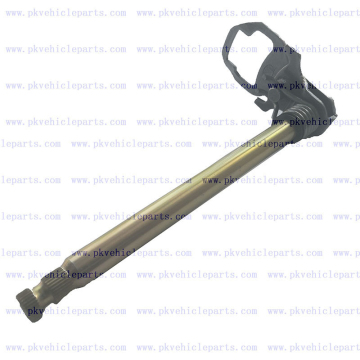6 Steps to Adjust Motorcycle Engine Valves
Valves in your motorcycle engine shut and open hundreds of times each minute. Made up of metal, they get hot as you drive and they expand. As a result, the valve seats wear down with time, causing the valves to move up into the aluminum head. This reduces clearance between the cam lobes and the valve stem end, thus affecting the way the valves shut and open. When you buy a new motorcycle, the valve clearance remains steady for the first 80-120 hours, and then starts wearing down. To cope with this, you need to adjust them regularly. If left unattended, the valves will not seat completely, and you will hear valve-train noise more clearly.
6 Steps to follow to Adjust Motorcycle Engine Valves:
1.Before we tell you the steps you need to follow in order to adjust motorcycle engine valves, let’s take a look at the symptoms that indicate your motorcycle needs valve clearance or adjustment:
You may hear a knocking type noise in the valve area
Your motorcycle will start losing power
The engine is hard to start
The sound of your motorbike changes
2.Prepare: To prepare for the job, firstly you should know that the motorcycle needs to be completely cold. So make sure you leave your motorcycle in your garage over night and don’t use it before you attempt to adjust the valves.
Remove the valve cover. Use a screwdriver to loosen the bolts of your valve cover and remove its head evenly from every side.
Also, you will have to remove many things from the motorcycle’s valve cover area, so that you can conveniently work with the valves and the performance motorcycle camshafts. These include:
Radiator
Airbox
Gas tank
Tank, mid and upper fairings
Radiator filler
Thermostat and hoses
Coils
Carburetor
Coolant and drain oil
Oil delivery line
Right down tube
3.Make adjustments: Remove the camshafts, camchain guides, camchain tensioner and camshaft caps until you see the buckets or valve lifters. You will find a shim under each of these. Pull off all the lifters that you want to replace. Lay them on a paper sheet along with their shims, and note their size so that you can get a replacement for them. If you are not sure of their size, you can use a micrometer to measure their thickness. Apply some assembly oil or moly grease on the new shims, put them back in the engine, and cover with the lifters that you earlier removed.

4.Measure the clearance: After removing the cover, you will be able to see the camchain ad the camshafts. Now turn the alternator anti-clockwise after removing the alternator cover. You will be able to see a ‘T’ near the crankcase line. Now you have to measure four clearances for the motorcycle piston’s valves. Try with the minimal clearance feeler gauge and work until you identify the one that just doesn’t go in. The clearance you want is the one less than this one. Make a table of all the measurements. Once you have measured your first piston, do it with other pistons too by rotating them 180 degrees in clockwise direction. After doing this, you will be able to identify how many engine valves are out of adjustment.
5.Put them back together: Take help of your pictures and put everything back to its place. Put back the camshafts, install the chain back over them, line up the markers with camshaft caps, tighten up the caps, push down the camchain between two sprockets, slowly rotate the alternator and make sure that everything is lined up. Now, reinstall the tensioner and make sure that all of them are perfectly done.
6.Finalize: Finally, reinstall the alternator and the valve cover. You may consider replacing the old rubber bushing and bolts with new ones, and also refilling the coolant and the drained oil. As you have already removed your coolant, it’s the right time to do a coolant flush as well. Now, start the motorcycle parts wholesale and enjoy a better ride than before.
Make sure you keep up with your motorcycle’s maintenance as, if you leave valves un-adjusted it could cause serious and costly problems

